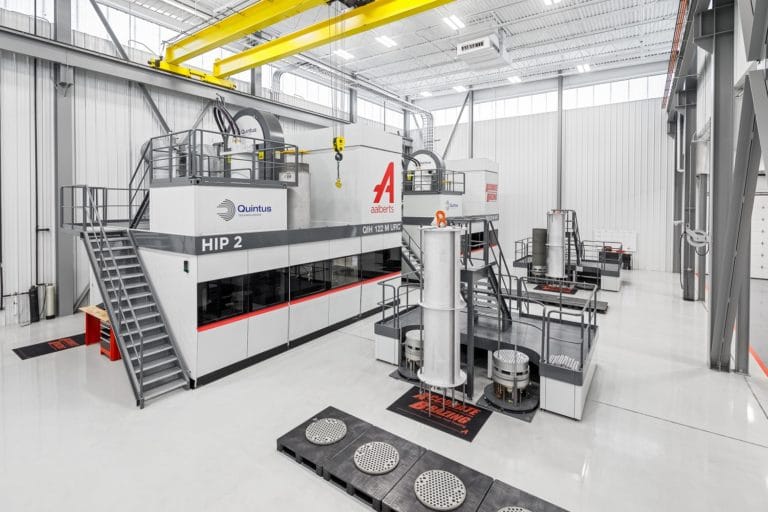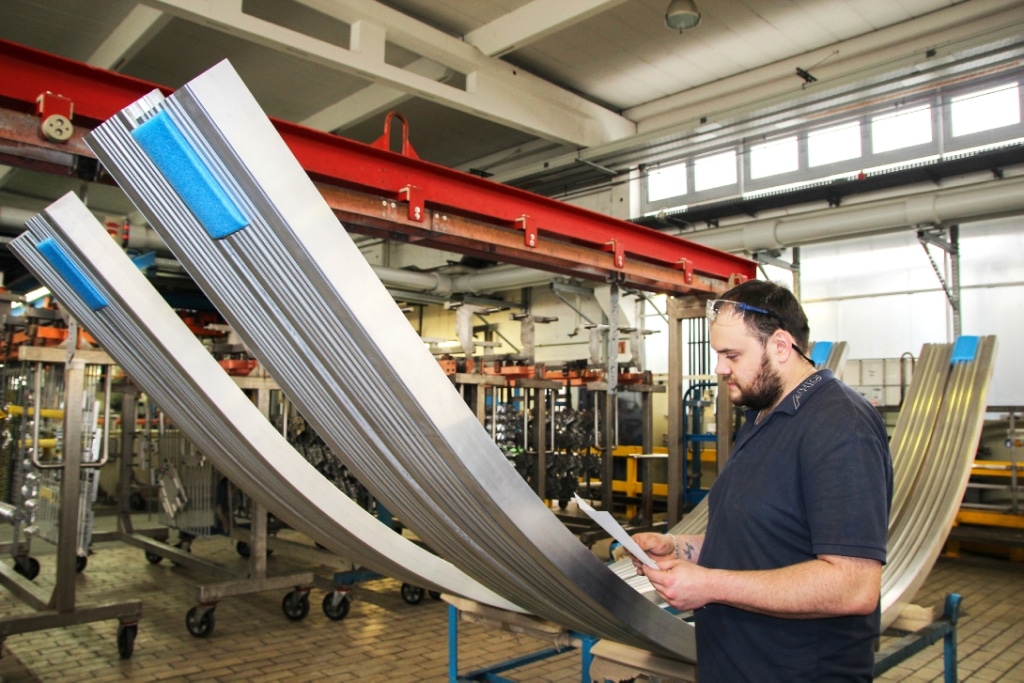hot isostatic pressing
what is Hot Isostatic Pressing (HIP)?
Hot Isostatic Pressing (HIP), or ‘Hipp’ing’, is the simultaneous application of heat and high pressure to materials. This process is ideal to improve the characteristics of your additive manufactured product by removing the porosity up to 100%.
HIP: Innovative technology for more than 50 years
Today, this process is already used in the improvement of additive manufactured products. Following Hipp’ing, the result is elimination of internal voids (i.e. porosity) and improved microstructure, leading to hugely improved mechanical properties. HIP can be applied to a large range of alloys, including titanium, steels, aluminum, copper, and magnesium.
Hot Isostatic Pressing (HIP)
A HIP unit consists of a high temperature furnace enclosed within a pressure vessel. Components are heated under a uniform, isostatic pressure of inert Argon gas. When components are treated with HIP, the simultaneous application of heat and pressure eliminates internal voids and microporosity through a combination of plastic deformation, creep and diffusion bonding. The additive manufactured product will be significantly improved after this process

The press, model QIH 122 M URC®, is equipped with Quintus’ proprietary uniform rapid cooling (URC), a feature that improves material properties of parts designed for mission-critical applications, increasingly produced in the vibrant additive manufacturing (AM) environment.
fields of application of HIP
ADDITIVE MANUFACTURED PRODUCTS BENEFIT FROM HOT ISOSTATIC PRESSING
HIP is effective with almost all materials – including metals, ceramics and plastics. HIP repaired additive products have all of their porosity removed. These HIPped materials have improved mechanical properties such as fatigue strength and increased workability. The HIP process densifies, repairs and creates a clean uniform microstructure of the additive manufactured parts. Examination of HIPped parts by non destructive testing techniques show excellent results. In Powder Metallurgy, the HIP process can produce materials from metallic compositions that are difficult or impossible to forge or cast.
A HIP unit consists of a high temperature furnace enclosed within a pressure vessel. Castings or Powdered Metals are placed in a CAN (the work pieces) and heated under a uniform, isostatic pressure of inert Argon gas. This process repairs castings that have both visible and invisible adverse properties. Following Hipping, the result is elimination of internal voids (i.e. porosity) and improved microstructure. Any voids in the casting will repaired by this process.
If you seek to repair your casting, the HIP process is the route to do it. If you have critically important cast parts and require certainty of performance (e.g. for the links used in helicopter power trains) then your casting process should be completed using HIPping. This will ensure that there are no invisible, weak areas within your component.
HIP is effective with almost all materials – including metals, ceramics and plastics. HIP repaired castings have all the porosity removed. The reduced porosity of HIP’ed materials enables improved mechanical properties such as fatigue strength and increased workability. The HIP process densifies and repairs and creates a clean uniform microstructure of the casting. Examination of HIPPED parts by nondestructive testing techniques show excellent results. These characteristics are not possible with welding or casting.
In Powder Metallurgy, the HIP process can produce materials from metallic compositions that are difficult or impossible to forge or cast.
We recommend that a container is used – they are generally called “Cans” that hold the forming material and the powdered metal or alloy. Using this process, we deliver Near Net Shape for clients, which has many similarities with 3D printing, and lost wax manufacture.
As our approach uses high temperature furnace, gas environment, and high pressure, our clients are able to avoid significant post HIP operations.
Applications:
- Removal of porosity in castings
- Consolidation of encapsulated powders to near-net shape forming
- Densification of MMC’s and Ceramics
- Advanced diffusion bonding techniques (cladding)
groundbreaking industries we serve
frequently asked questions
Removing the porosity up to theoretical 100%
process locations
Any questions? Contact us directly or select a process location near you.

